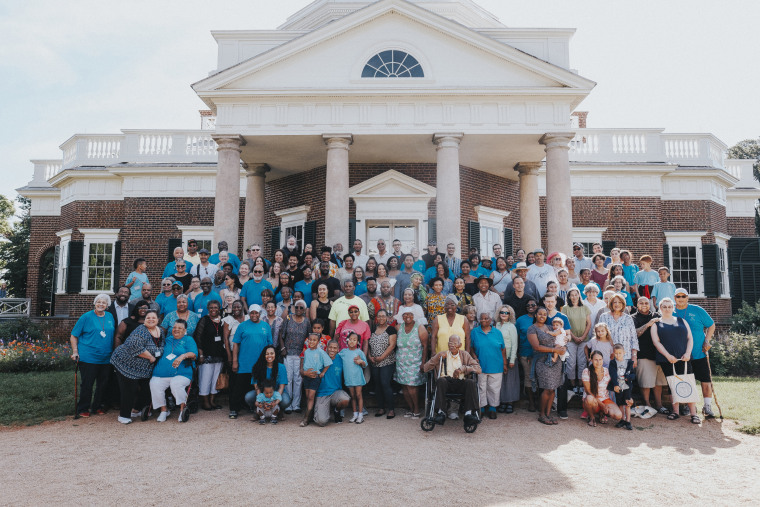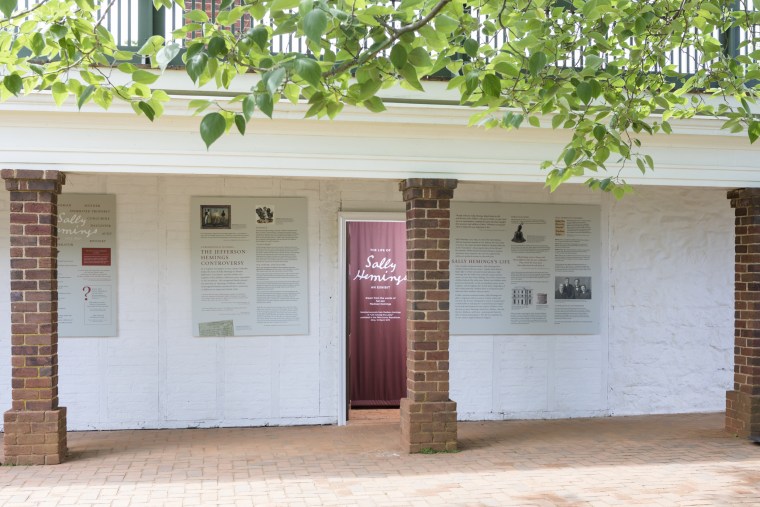In an 1873 interview with the Pike County Republican newspaper, Madison Hemings, the second son of Thomas Jefferson and his slave Sally Hemings, told a story. It was a story that would confirm the decades of rumors that had circulated since Jefferson ran for president in 1801.
Madison Hemings began his recollection of his parent’s taboo relationship with these words:
"But during that time (in Paris) my mother became Mr. Jefferson's concubine, and when he was called back home she was [pregnant] by him. He desired to bring my mother back to Virginia with him, but she demurred. She was just beginning to understand the French language well, and in France she was free, while if she returned to Virginia she would be re-enslaved. So, she refused to return with him. To induce her to do so he promised her extraordinary privileges and made a solemn pledge that her children should be freed at the age of twenty-one years. In consequence of his promise, on which she implicitly relied, she returned with him to Virginia."

On June 16, 2018, at Thomas Jefferson’s ancestral home, Monticello, descendants of Hemings and Jefferson reunited to help unveil, among other important exhibits, the newly discovered living quarters of Hemings and her children.
It was an important moment for Monticello, which has embarked on a 25-year-long project to reinterpret and update its historical spaces to be more inclusive and honest about the people who lived and were enslaved there. But there is also something very timely about the exhibit given the current political climate.
As we debate the immigration and border crisis in Texas right now, we are reminded that this is not the first time in American history that children have been separated from their parents, treated inhumanely, or even caged.
As we debate the immigration and border crisis in Texas right now, we are reminded that this is not the first time in American history that children have been separated from their parents, treated inhumanely, or even caged.
This anecdote from Madison Hemings’ memoirs, read by Pulitzer Prize-winning historian Annette Gordon Reed at the unveiling, underscores that larger and important truth. “We were always allowed to be with our mother,” Reed read.
There was a hush of silence as she shared those words, because everyone understood that Sally Hemings had “negotiated” with Jefferson, as a 16-year-old teenage girl, not only for freedom for each of their children, but also for what Madison called “extraordinary” privileges that other slave women did not have. One of these privileges was having her children near her and with her all of the time. She also ensured that her children would never be sold away from her, something every slave woman knew was a possibility.
America right now is at a pivotal moment on matters of race, equality and human dignity. It is a familiar place, and one that we have been to before. Slave children were routinely separated from and often sold away from their mothers. They were chattel. They were traumatized, beaten, violated and worked 12-hour days or more, just like their parents.
“The reality is that this country was founded both on ideas of liberty and freedom, but also on human bondage based on hierarchies of race,” Monticello slave life interpreter Brandon Dillard told me. “What we are attempting to do with these exhibits, specifically in this space with Sally Hemings is to humanize her, share her story, her agency, and to help people to connect with the truth of our complicated past around American slavery.”
Thomas Jefferson, the man who so proudly advocated for man’s God given and “unalienable” rights (life, liberty and the pursuit of happiness), inherited 30 slaves from his father, a tobacco planter named Peter Jefferson, in 1764. When he married Martha Wayles Skelton in 1774, he inherited 135 more slaves. Martha’s father, John Wayles, was also the biological father of Sally Hemings.
Sally Hemings’ story is a complicated one. We have no photographs of her, and very few descriptions. Historians have very little information to go on regarding her story. What do we call her relationship with Jefferson? Was it rape? Was it an arrangement she desired? Or one she merely endured?
The caretakers of Monticello have attempted to answer these questions, as best they can. And they have done so with great respect, attention and candor. Once such example, beyond the Hemings exhibits in the south wing, is the Getting Word oral history project, led by Niya Bates, public historian of slavery and African life at Monticello. “Our goal is to bring to life the family contributions of the enslaved people that worked and lived here at Monticello through their descendants,” Bates said.
Hemings was for all intents and purposes a “free woman” after Monticello was sold. In the 1830 Census, she is listed among “free white people” — and in the 1833 Census as a “free mulatto.” It would be almost another 30 years before the rest of enslaved people in America would be free, too.
In providing Sally Hemings with her rightful place in history, we give her and her descendants back their sense of humanity.
Ultimately, however, the Monticello exhibit is a reminder of both the best and worst of America. In providing Sally Hemings with her rightful place in history, we give her and her descendants back their sense of humanity. As Gayle Jessup White, a direct descendant of Sally Hemings’ brother Peter Hemmngs, noted: “To walk where my ancestor walked, to feel the soil in my hands was powerful. It was moving. What we have done here is give Sally Hemings and the other enslaved people at Monticello their humanity — their humanity that was taken from them — they were not known as the people they were. Sally was not known as mother, sister, daughter, only as an appendage to Jefferson, and a scandalous one at that.”

But it is also a reminder that white men of wealth and power, have for far too long been able to control who was allowed to be a citizen and who was allowed to stay a family. Jefferson was no different, regardless of how much we revere him for his contributions to a young nation in 1776 and beyond.
Perhaps Leslie Bowman, President and CEO of Monticello, said it best: “Thomas Jefferson gave us one of the greatest ideas the globe has ever acted upon. He couldn’t fulfill them. He failed us totally on slavery. As did the other founders. But he gave us a vision. And when you come to Monticello you feel that vision then you also feel how far short we as humans can fall. And those are the conflicts we as Americans need to deal with remember that vision and get our country closer to what we are capable of.”
Sophia A. Nelson is an NBC BLK contributor and author of “E Pluribus One: Reclaiming Our Founder’s Vision for a United America” (January 2017).
